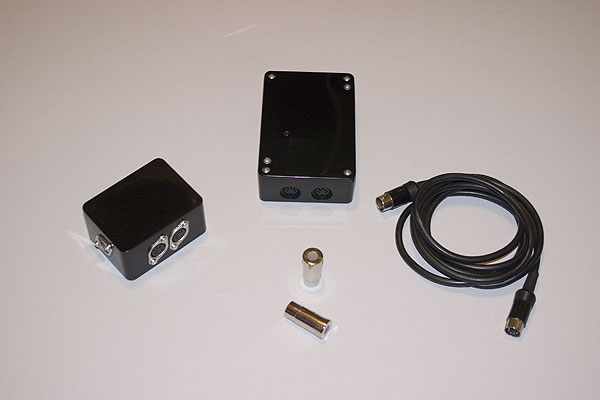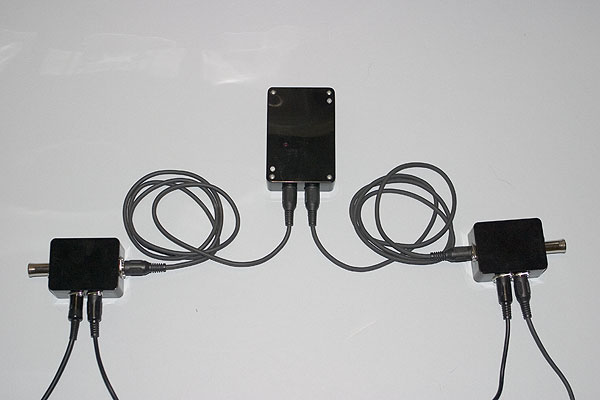Wiring up an Acorn Econet network
An Acorn Econet network is based on a 5 wire network bus architecture where two wires are used for Data +/-, two for the Clock +/- and the fifth wire is used as a common ground.
The picture below shows the basic components of an Econet network that you'll need to build a network to connect your Acorn computers to.

In the photo above, from left to right there are the following items.
- A modular Econet Socket box
- An Econet clock
- Two Econet terminators
- An Econet cable (5 pin DIN to 5 pin DIN straight through cable)
For every Econet network, you need one Clock, two Terminators, enough socket boxes to support the number of computers you need and enough cables to connect everything together.
When buying cables suitable for use with an Econet, be aware that although a MIDI cable appears to be the same, only three wires are required for a full MIDI connection and therefore may not be suitable for use as Econet cables.
The Econet Wiring Loom
The photo below shows how an Econet network supporting four computers can be constructed using two socket boxes, a clock, two terminators and 6 Econet cables.

Placement of the Econet components
The Econet clock should be placed as close to the centre of an Econet wiring loom as possible. The Econet terminators should be placed at the two farthest points from the clock thereby being the last component in the "chain" of components on the network. The socket boxes can be "daisy chained" together to add support for many more computers but should always be done in a way that keeps the network nodes as balanced as possible for best performance. Each socket box then provides support for a maximum of two computers to be connected directly to it.